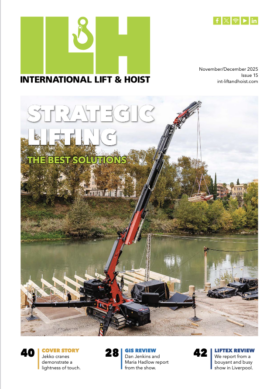NIOSH Alert Provides Recommendations for Mobile Crane Safety
A new alert issued by NIOSH provides recommendations for reducing risk of work-related injury and death when working on or around mobile cranes. Six case studies on incidents that resulted in eight deaths and two injuries are used as examples for employers. In each incident, these injuries or deaths could have been prevented by using proper safety procedures.
A selection of background data on mobile cranes is included in the alert as well, describing how mobile cranes work and what occurs when a lift is made. Injury data is also compiled within the NIOSH report, detailing how accidents occur and what happened to cause the injuries or fatalities.
In its concluding remarks, NIOSH provided nine steps that employers should take to protect their workers, which include:
- Make sure your work sites comply with safety requirements found in pertinent regulations, including OSHA 29 CFR1910.180 (general industry cranes); 29 CFR 1917.45 (marine terminals); 29 CFR 1918.66 (maritime, cranes, and derricks other than vessel's gear); 29 CFR 1926.550 (construction industry cranes and derricks); and ASME B30.5•2004, mobile and locomotive cranes;
- Conduct training to ensure crane operators understand safe crane operation, as well as the principles of set-up, rigging, hoisting, extending the boom, swinging a load, pinching and crushing points, swing radius warning barriers, power line safety, etc.;
- Conduct training to ensure riggers and ground workers understand the hazards of working around mobile cranes and that they watch for signs of problems at all times, especially if power lines are nearby;
- Develop and implement standard operating procedures for safely lifting loads;
- Develop and follow a written engineered lift plan for all critical lifts;
- When multiple lifts are made from one location (such as during duty cycle operations) check the condition of the ground and blocking materials regularly and as often as possible to ensure the crane remains on firm, stable ground;
- Ensure that mobile cranes located on floating barges are positively secured and barge list (leaning or tilt) is accounted for;
- Follow the manufacturer's recommended assembly, disassembly, and maintenance procedures when working on cranes; and
- Comply with child labor laws that prohibit construction and manufacturing work by persons under age 16 and that prohibits workers under age 18 from operating or assisting in the operation, repair, servicing, assembly, disassembly, and similar activities associated with mobile cranes. For more information about Federal child labor laws, visit http://www.dol.gov/dol/topic/youthlabor/index.htm; or call 1•866•4•USADOL.
The alert, which also includes separate safety tips for operators and for riggers and ground workers, can be accessed at www.cdc.gov/niosh/docs/2006-142.











